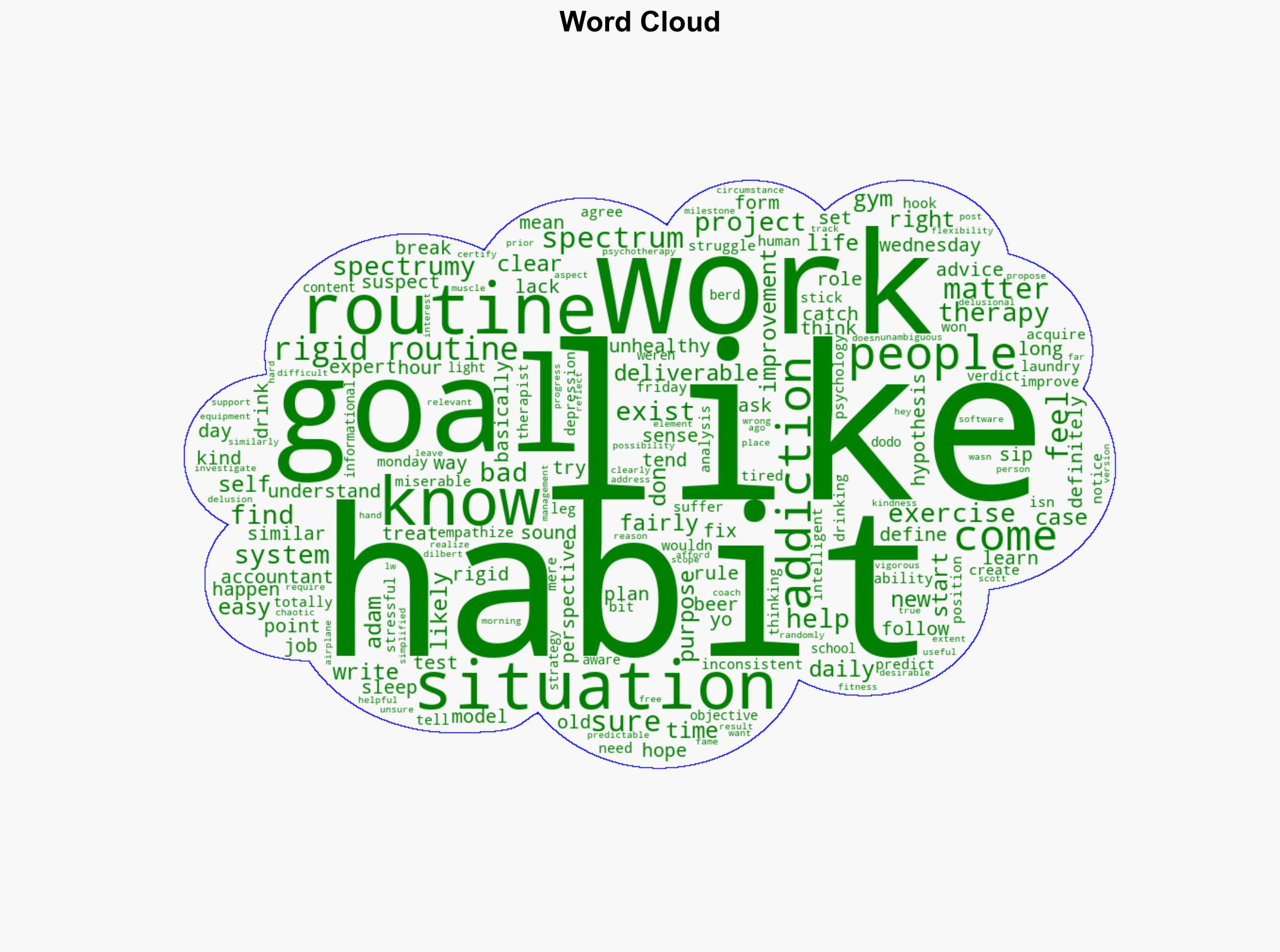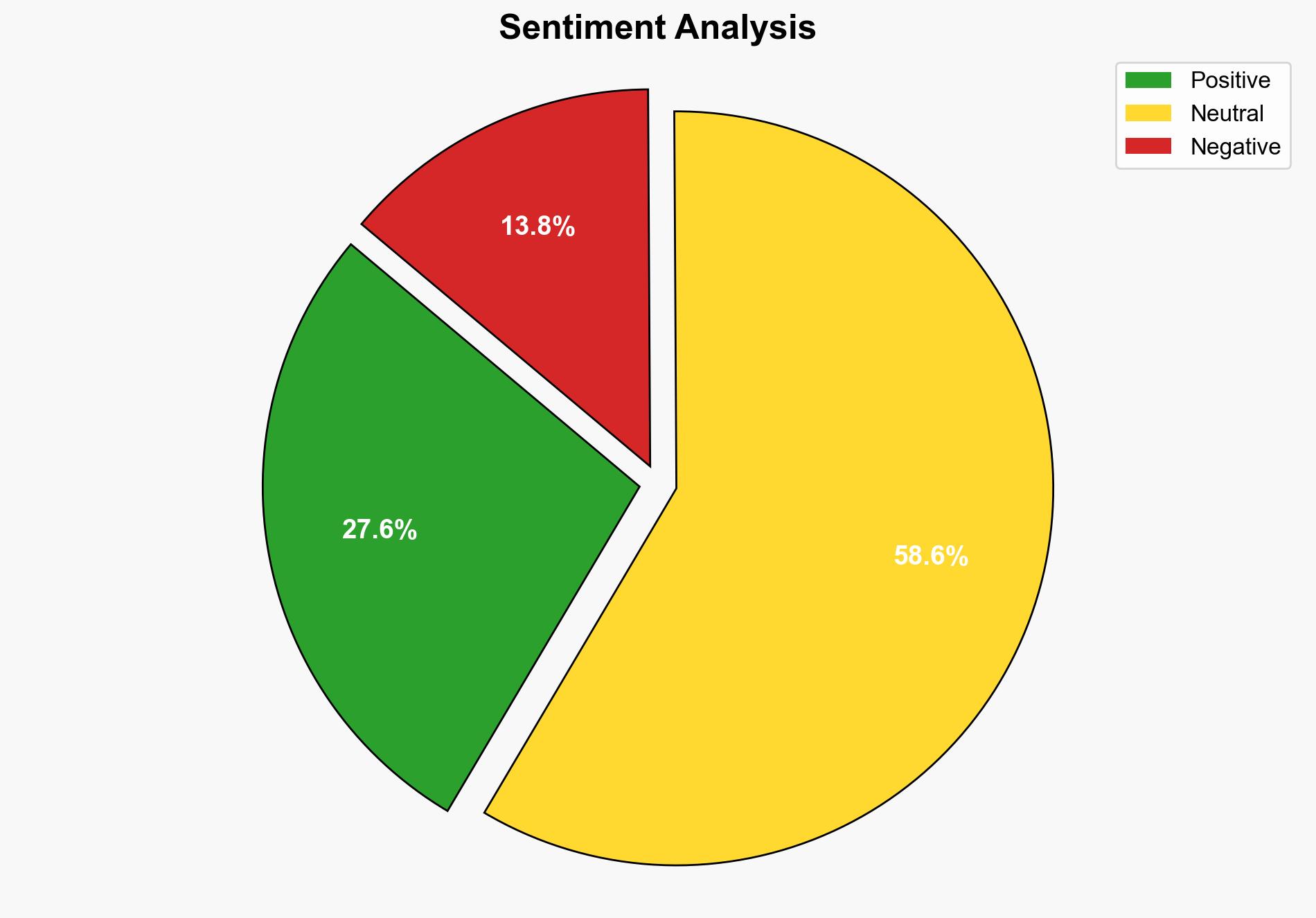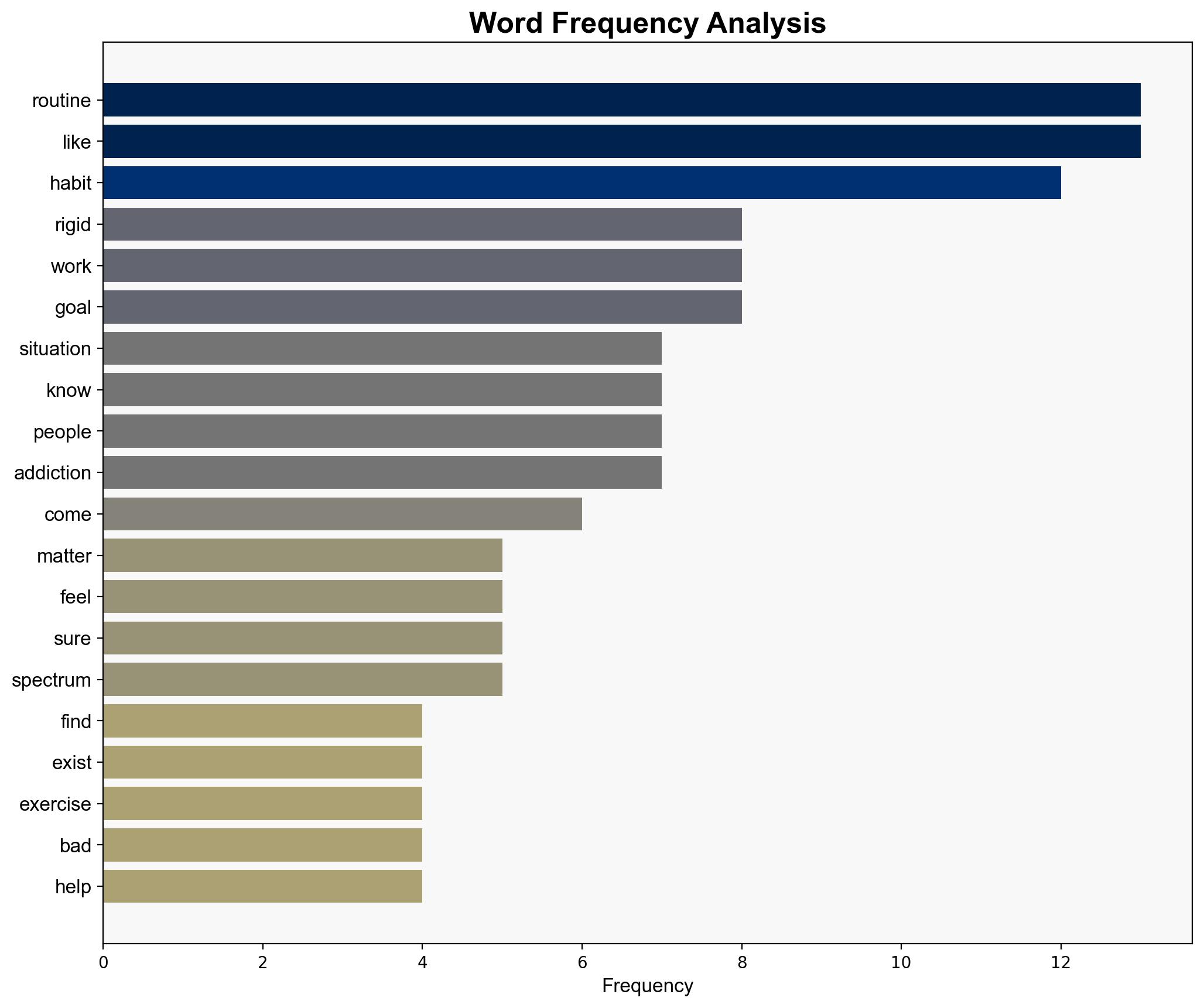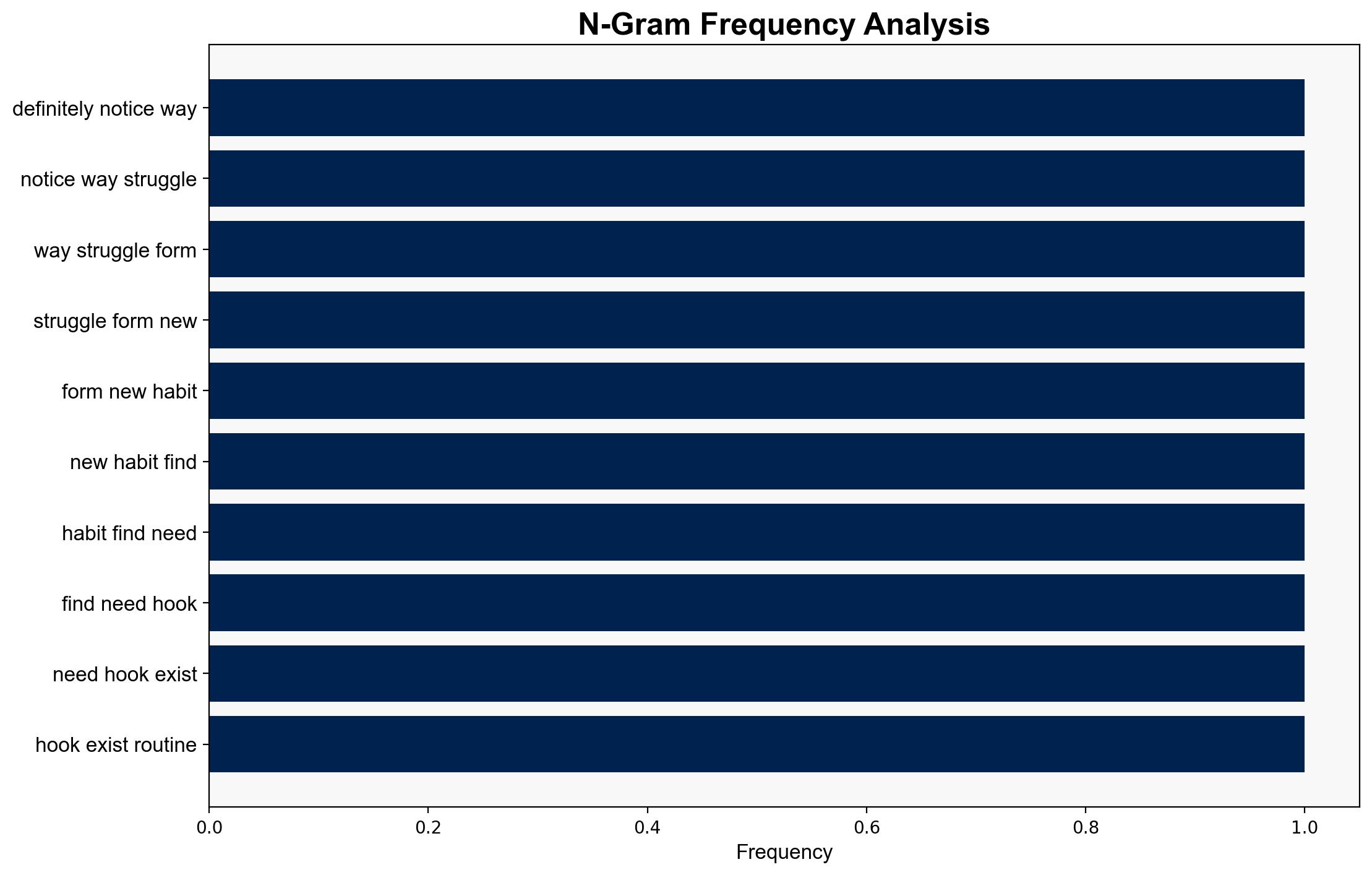Hacking The Spectrum For Profit Maybe Fun – Lesswrong.com
Published on: 2025-08-31
Intelligence Report: Hacking The Spectrum For Profit Maybe Fun – Lesswrong.com
1. BLUF (Bottom Line Up Front)
The analysis explores the challenges and strategies related to habit formation and routine adherence, particularly among individuals on the autism spectrum. The most supported hypothesis suggests that rigid routines can both aid and hinder personal development. Confidence level: Moderate. Recommended action: Encourage personalized habit-forming strategies that leverage individual strengths while addressing potential pitfalls of rigidity.
2. Competing Hypotheses
1. **Hypothesis A**: Individuals on the autism spectrum benefit from rigid routines, which provide structure and predictability, aiding in personal and professional development.
2. **Hypothesis B**: Rigid routines can become detrimental, leading to inflexibility and difficulty in adapting to new situations, potentially exacerbating stress and mental health issues.
Using the Analysis of Competing Hypotheses (ACH) 2.0, Hypothesis A is better supported by the data. The text emphasizes the importance of routines for predictability and goal achievement, suggesting benefits in structured environments.
3. Key Assumptions and Red Flags
– **Assumptions**: It is assumed that all individuals on the spectrum respond similarly to routine structures. This overlooks individual variability.
– **Red Flags**: The text lacks empirical data supporting the universal benefit of rigid routines. There is also a potential bias towards viewing routine as inherently positive without considering negative impacts.
4. Implications and Strategic Risks
– **Implications**: If rigid routines are overly relied upon, individuals may struggle with adaptability, impacting personal growth and professional opportunities.
– **Strategic Risks**: Overemphasis on routine could lead to increased stress and mental health challenges, particularly if routines are disrupted.
5. Recommendations and Outlook
- Encourage development of flexible routines that allow for adaptability and resilience.
- Promote awareness of individual differences in routine effectiveness among those on the spectrum.
- Scenario-based projections:
- Best: Individuals develop personalized strategies, enhancing productivity and well-being.
- Worst: Over-reliance on rigid routines leads to increased stress and decreased adaptability.
- Most Likely: A balanced approach yields moderate improvements in personal and professional domains.
6. Key Individuals and Entities
The text does not mention specific individuals. It broadly addresses people interested in self-improvement and those on the autism spectrum.
7. Thematic Tags
self-improvement, autism spectrum, habit formation, mental health, adaptability





